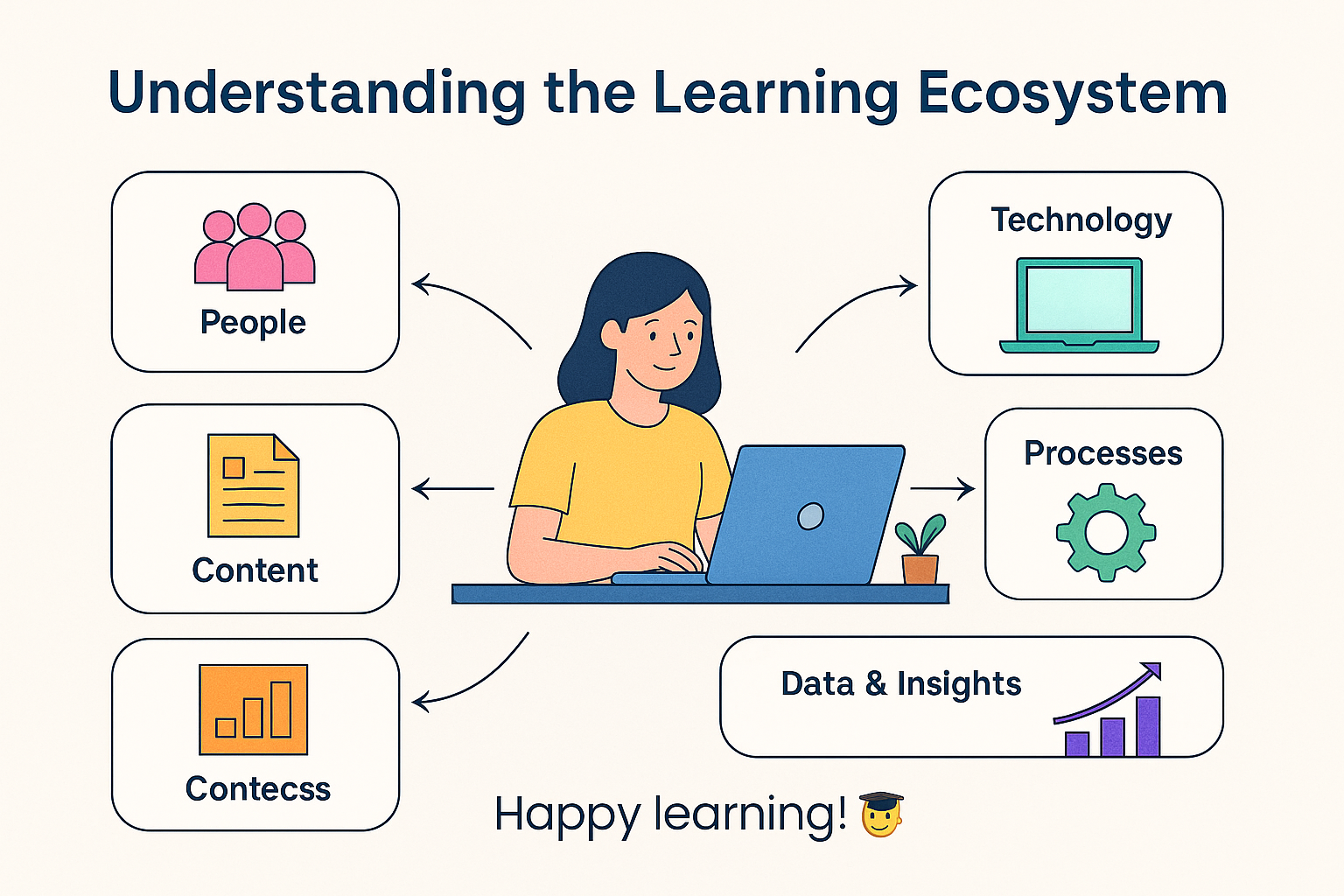🌱 What Is a Learning Ecosystem? And Why Your Organization Needs One
You’ve probably heard the term “learning ecosystem” thrown around in L&D conversations, but what does it really mean? Simply put, a learning ecosystem is the complete environment in which workplace learning happens—not just a platform or a program, but the full web of people, tools, content, and systems that enable growth.
Think of it like a natural ecosystem. Just as plants, animals, water, and sunlight interact to support life, a learning ecosystem brings together diverse elements to support continuous learning and development.
🗂️ What Makes Up a Learning Ecosystem?
It’s not just your LMS. A healthy learning ecosystem includes:
People: Learners, managers, mentors, L&D professionals, SMEs
Technology: LMS, LRS, authoring tools, collaboration platforms, AI tools
Content: eLearning modules, video, podcasts, job aids, live sessions, coaching
Processes: Onboarding, compliance, skills development, feedback loops
Data: Analytics dashboards, xAPI data, performance metrics
These components work together to deliver, support, and measure learning across multiple formats and channels.
✅ Why Your Organization Needs One
A learning ecosystem helps your team:
Support learning in the flow of work (not just in courses)
Link formal and informal learning experiences
Personalize learning paths with real-time data
Promote collaboration and peer learning
Track skills, performance, and impact across systems
When all parts of your ecosystem are connected, learning becomes more strategic, scalable, and measurable.
🚧 What It Looks Like in Action
Imagine this learner journey:
Jamie takes an onboarding course in the LMS
He watches a YouTube tutorial linked in a resource library
He joins a discussion in Microsoft Teams
A mentor gives feedback via a coaching app
The LRS collects all of this as xAPI data
Instead of scattered experiences, everything is connected. The ecosystem enables both learning and visibility.
🧩 Key Tools in a Learning Ecosystem
Here are a few commonly used components:
LMS (e.g., Docebo, Cornerstone): Hosts formal training
LRS (e.g., Watershed, Learning Locker): Stores learning data from multiple sources
Authoring tools (e.g., Articulate, Vyond): Create engaging content
Knowledge hubs (e.g., Notion, SharePoint): Share articles, checklists, SOPs
Collaboration tools (e.g., Teams, Slack): Enable social learning
AI tools (e.g., ChatGPT, Synthesia): Speed up content creation and personalization
🚀 Getting Started
If your organization still sees learning as just “assigned courses,” it’s time to evolve. Start by:
Mapping what tools and content already exist
Identifying gaps in delivery or tracking
Connecting systems with xAPI or integrations
Encouraging learning that happens beyond the LMS
The goal isn’t to add more tools—it’s to connect and optimize what you already have.
🌟 Final Thought
A strong learning ecosystem empowers your workforce to learn anywhere, anytime, and from anyone. It’s the difference between checking a box and building real capability.
Happy building! 🏢🧰

